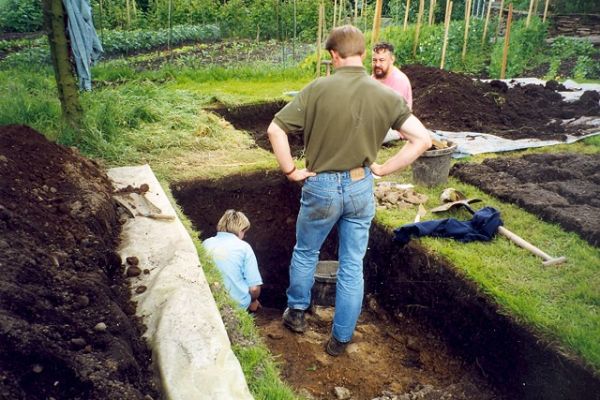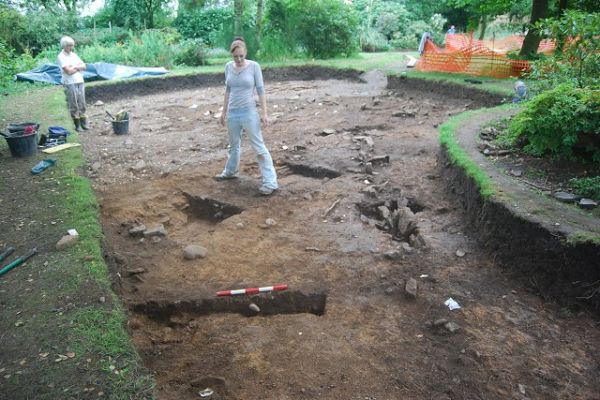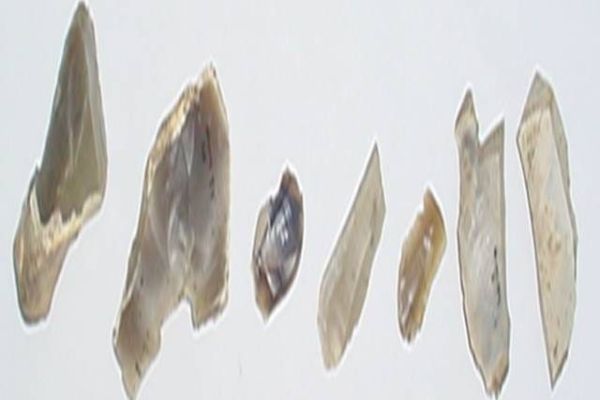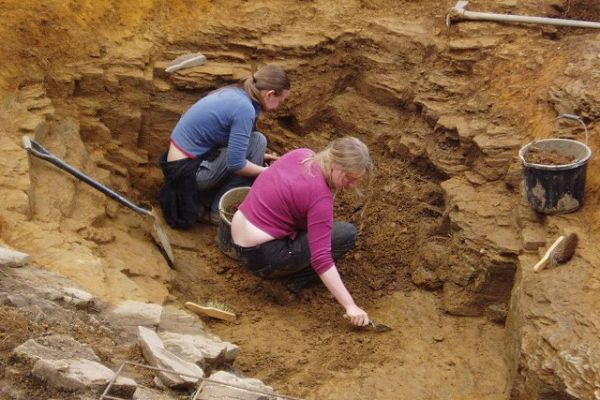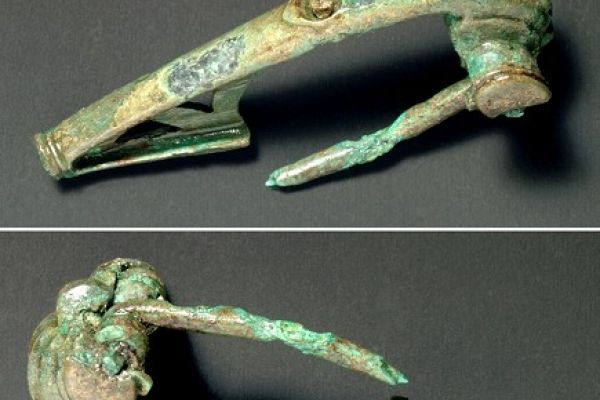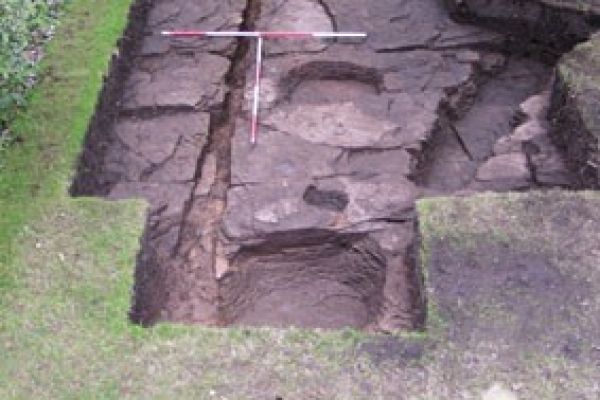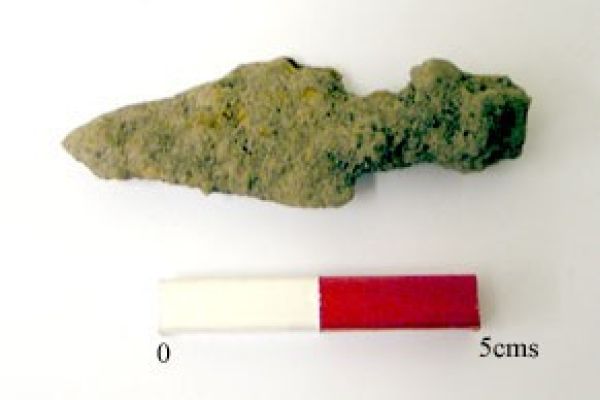For the full story of the multi-period Old Vicarage site go to www.mellorarchaeology-2000-2010.org.uk
There was a drought in 1995. When Ann Hearle looked over the north wall of the Old Vicarage drive, she saw a green line arcing over the field. On either side the grass was parched. Ann took some photos, thinking that the line might come from the foundations of medieval buildings. How wrong she was! In 1997, Peter Arrowsmith was writing a history of Stockport. Ann showed Peter the photos when he came to ask about the history of the district. He walked round and said "This is old!". That is how it all began. Next year, Graham Eyre-Morgan from the University of Manchester Archaeology Unit (UMAU) brought out three students. They carried out a resistivity survey and then dug trial trenches in the garden. One evening, Graham came out after the students had left and trowelled a bit further. He found the edges of a ditch cut into the rock. As the students dug deeper in the following days, they found Romano-British and Iron Age artefacts.
There was a drought in 1995. When Ann Hearle looked over the north wall of the Old Vicarage drive, she saw a green line arcing over the field. On either side the grass was parched. Ann took some photos, thinking that the line might come from the foundations of medieval buildings. How wrong she was! In 1997, Peter Arrowsmith was writing a history of Stockport. Ann showed Peter the photos when he came to ask about the history of the district. He walked round and said "This is old!". That is how it all began. Next year, Graham Eyre-Morgan from the University of Manchester Archaeology Unit (UMAU) brought out three students. They carried out a resistivity survey and then dug trial trenches in the garden. One evening, Graham came out after the students had left and trowelled a bit further. He found the edges of a ditch cut into the rock. As the students dug deeper in the following days, they found Romano-British and Iron Age artefacts.
So started 12 years of excavations, which uncovered 10,000 years of history in the Old Vicarage garden and the adjoining fields: Mesolithic, Neolithic and Bronze Age flints; inner and outer Iron Age ditches; Roman pottery; and brooches and arrowheads in the post-holes of a medieval hall. From three students, the numbers grew to around 30 volunteers each day from Monday to Friday for seven weeks each summer. Following Graham, the excavations were directed by Stuart Holden, John Roberts, Peter Noble, and Adam Thompson, assisted by others from UMAU. In 2000, we formed the Mellor Archaeological Trust to oversee the activity. What was found was one of the most important archaeological discoveries on the south-west edge of the Pennines, but it could not have been achieved without the support of the Heritage Lottery Fund, Stockport Council and the Friends of the Trust, the expertise of the professionals from UMAU and the work of a host of volunteers aged from 17 to 70. By 2009, every accessible part of the garden had been dug and the story of the Old Vicarage site was being written up for publication.

